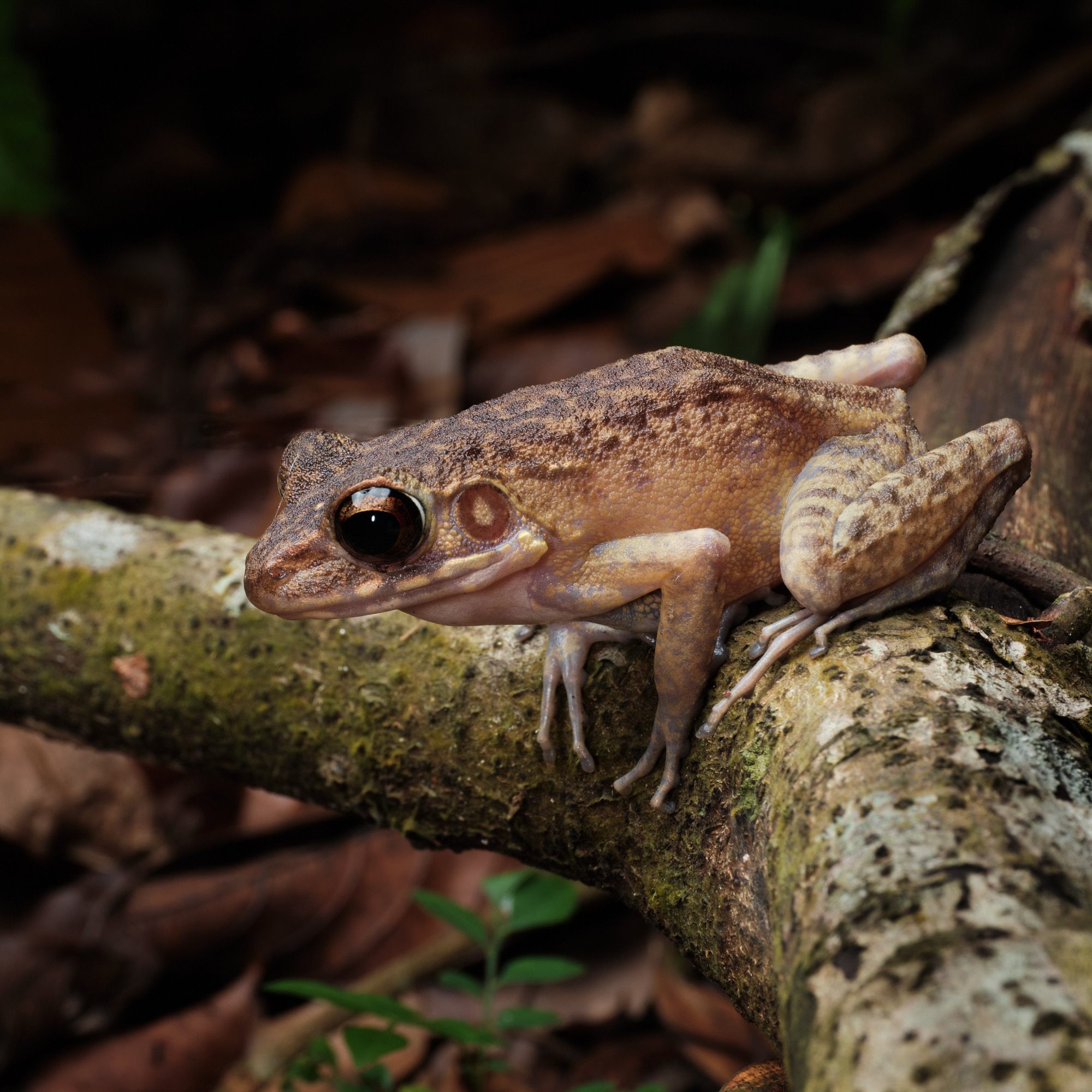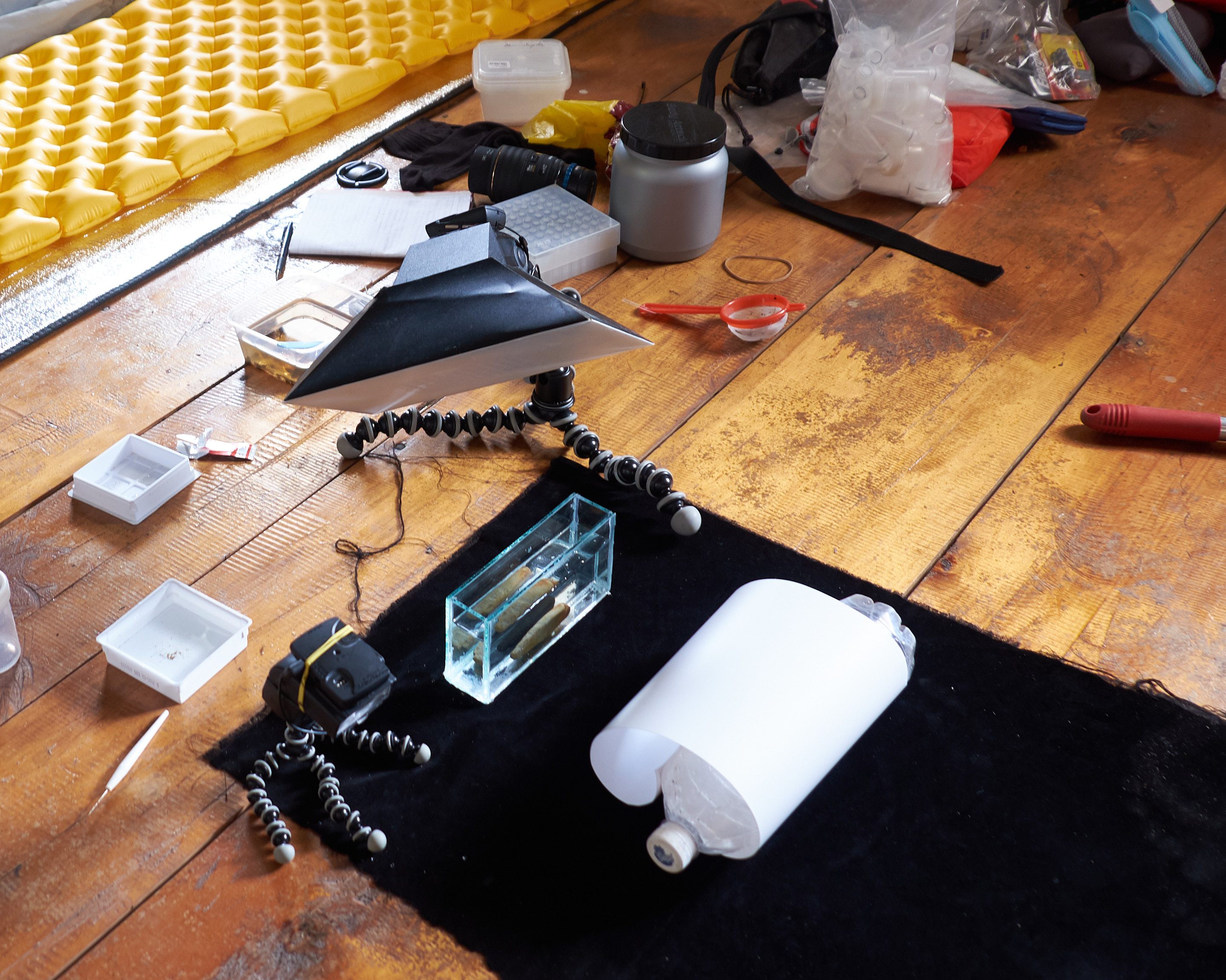On photos
We have thousands of images in our databases, covering frogs, tadpoles, and habitats from Borneo. Most of the photos are from our own group, but several individuals kindly provided additional photographic material, either because they can contribute rare photos or have excellent photographic skills. We acknowledge those friends and supporters on the pages where their photos appear. The copyrights of images contributed by others are sometimes indicated by watermarks.
Less is more! For this web site we try to select high quality photos or photos that show a specific feature useful for identification. A good photo in this sense is not necessarily beautiful or technically impeccable. Sometimes, however, we have to take just what is available, for example, in rare species.
Please respect copyrights and the Creative Commons license of this website.

Pulchrana baramica perching.
Some notes on frog and tadpole photography
Use mirrorless camera equipment of one of the big camera makers. Use macro prime lenses, in the range of 60–100 mm focal length (full frame) or 30-70 mm (APSC). It is worth spending money on good lenses and flashes rather than on an expensive camera body. In the field weight of the camera equipment can be an issue. Frogs tend to sit still for some time and then jump away all the sudden. Therefore, a tripod is of little use.
The flash system is critical for taking images with small aperture (11-22) and great depth of field. Full format cameras give less depth of field than APS sensor cameras. Use the dedicated flash system of your camera manufacturer or a compatiple third party to get optimal control of your flash system and lighting of the scene. One flash will give enough light, but will give you limited options for lighting; a second slave flash will increase your creative freedom. Softboxes and diffusors are highly recommended for better results.

Improvised workplace for tadpole photography in a field situation.
For tadpole photography, you will have to catch the tadpoles and put them into a small glass aquarium. Catching and handling delicate tadpoles must be done carefully and needs some experience. Use water from the site to fill the aquarium; never use tap water. Put tadpoles back to their pond or stream after photography.
The use of two flashes and diffusors can create soft lighting and moderate shadows. Put the falshes on small tripods to flexibly put them in a position for the desired lighting. A wireless flash system with trigger on the camera will give you the freedom to move about with your camera to find the right angle of view. Configure small utensils (spoon, small plastic containers etc) accroding to your needs.